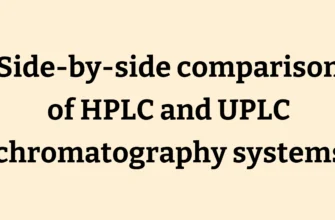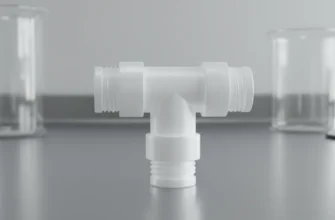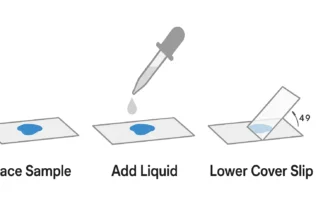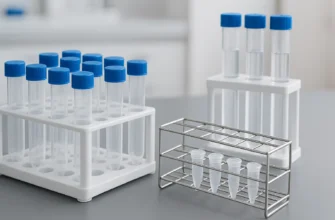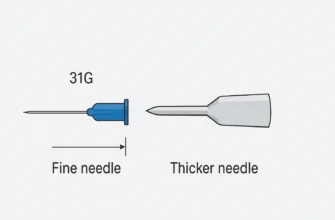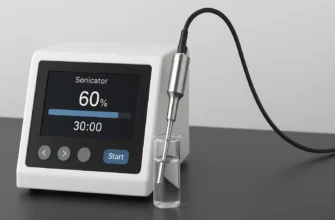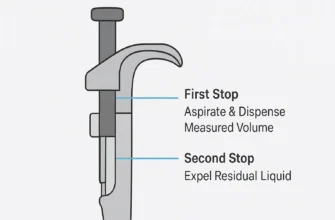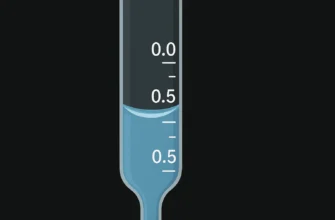The Essential Guide to Buret Use in Chemistry Labs
Key Highlights
-
Mastering the buret is essential for getting accurate measurements in chemistry experiments
-
Always read the volume from the bottom of the meniscus at eye level to avoid parallax errors
-
A buret precisely delivers a titrant solution to create a chemical reaction with an analyte during titrations
-
Properly preparing your buret, including removing air bubbles, is critical for reliable results
-
The goal of titration is to find the endpoint, which signals you have reached the equivalence point
-
Consistent cleaning and safe storage practices ensure your buret performs well for years
Introduction
Welcome to the world of titration, a fundamental technique for every chemist. At the heart of this process is the buret (also spelled burette), a simple yet powerful piece of volumetric glassware. While it might seem intimidating at first, learning to use a buret correctly is a rite of passage that unlocks the ability to perform highly precise analyses. Mastering this tool is your key to achieving accurate measurements and reliable results in the lab. Are you ready to get started?
Understanding Burets and Their Role in Chemistry Labs
A buret is a specialized piece of volumetric laboratory glassware designed for one primary purpose: titration. Unlike a beaker or graduated cylinder, its long, slender shape and precise markings are made for dispensing variable, exact amounts of liquid. This design is crucial for the controlled addition of a solution during analytical procedures.
The buret’s main function is to deliver a titrant into an analyte solution until a reaction is complete. Its clear borosilicate glass construction provides excellent visibility of the liquid level. Modern burets are manufactured from chemically resistant borosilicate glass 3.3, which provides superior chemical resistance and thermal stability compared to standard glass.
What is a buret and how does it work in titration?
At its core, a buret is a graduated glass tube with a stopcock at one end, designed for delivering known volumes of liquid, especially in titrations. In a titration, you use it to add a liquid called a titrant, which has a known concentration, into a different liquid called the analyte solution. The analyte is the solution of unknown concentration that you want to measure.
The process involves carefully adding the titrant from the buret to the analyte, often drop by drop. A chemical reaction occurs between the two substances. You continue adding the titrant until the reaction is perfectly complete, a point often signaled by a color change from an indicator.
By precisely measuring the volume of titrant used, you can calculate the exact amount of the substance in the analyte solution. This allows you to determine the concentration of the analyte with a high degree of accuracy, turning a qualitative reaction into a quantitative measurement.
Key features that set burets apart from other laboratory glassware
What makes a buret different from other glassware like a graduated cylinder? Modern laboratory burets, commonly available in 10, 25, 50, and 100 mL capacities, feature a long, cylindrical tube with detailed graduation markings down its length. These markings allow you to measure the volume of liquid delivered to a hundredth of a milliliter, with typical graduation intervals of 0.05 mL to 0.2 mL depending on capacity.
The most critical feature is the stopcock valve at the bottom. This valve gives you precise control over the flow rate, allowing you to dispense the liquid quickly at the start and then slow down to a drop-by-drop pace as you approach your target. Modern burets predominantly feature PTFE (polytetrafluoroethylene) stopcock systems, which are self-lubricating and eliminate the need for grease while preventing seizure and contamination issues.
PTFE stopcocks offer several advantages over traditional glass stopcocks: they are chemically inert, don’t require lubrication, and provide smooth operation without the risk of seizing. The straight bore PTFE key stopcock design helps eliminate common titration errors and provides enhanced precision.
Preparing and Filling a Buret for Accurate Measurements
Success in titration starts long before the first drop is added. Proper preparation, including cleaning, conditioning, and filling the buret, is essential for achieving accurate measurements. Each step ensures that the only liquid you measure is the titrant itself, free from contaminants or errors.
A crucial part of this setup is removing any trapped air bubbles from the buret’s tip. An unblemished inner surface and a bubble-free setup are non-negotiable for precision. Air bubbles can cause significant measurement errors by occupying space that registers as dispensed volume.
Step-by-step checklist for cleaning, conditioning, and filling a buret
Following a consistent procedure is the best way to prepare your buret for an experiment. A checklist helps ensure you don’t miss any crucial steps that could affect your results.
Here is a comprehensive checklist for getting your buret ready for use:
Thorough Cleaning: Start by washing the buret with detergent and a brush to remove any residue that could cause poor drainage. Use warm laboratory detergent solution and a buret brush to scrub the inner surface thoroughly. Rinse well with tap water followed by deionized water.
Conditioning: Rinse the buret at least three times with a small amount of your titrant solution. Be sure to let the solution drain through the buret tip each time to coat the inner surface and remove any residual water that could dilute your titrant.
Filling: Use a funnel to fill the buret with titrant. Fill it above the zero mark, and remember to remove the funnel before you start taking measurements. When adding solutions, make sure the stopcock is closed and tilt the buret slightly while pouring the solution slowly down the inside surface to prevent air bubble formation.
Remove Air Bubbles: Open the stopcock to let some liquid flow out, which will force any air bubbles from the tip. The pressure of the titrant in a full buret is often enough to force all bubbles out.
By completing these four steps, you ensure your equipment is perfectly primed for accurate and successful titration.
Why air bubbles matter and how to remove them before experiments
Why is an air bubble in your buret tip such a big deal? An air bubble takes up space, and if it dislodges and escapes during your titration, the volume it occupied is added to your reading, making it appear as if you’ve dispensed more liquid than you actually have. This single error can throw off your entire calculation and lead to inaccurate measurements.
Even very small bubbles can cause problems. They may not escape immediately, but as the chemical reaction proceeds, they can move toward the tip and escape unnoticed, making your results inconsistent and unreliable.
The quickest way to remove air bubbles is to fill the buret with titrant and open the valve fully; the pressure of the liquid column often forces them out. If that doesn’t work, you can try creating gentle suction with a pipette bulb at the buret tip. Another effective method is to give the buret tip a gentle downward jerk while the stopcock is open and solution is flowing.
If persistent bubbles remain, immerse the tip of the buret in a small beaker of titrant and use a bulb to gently pull liquid up while opening the valve. This will draw the bubble out without letting more air in.
Techniques for Reading and Handling Burets During Experiments
Once your buret is prepared, the next skill to master is reading it correctly. The key is to always view the liquid level from the bottom of the meniscus, with your eye level aligned with the surface. This practice prevents what is known as parallax error, which can significantly skew your results.
To make readings easier, simple tools like a buret card can enhance visibility. Proper handling also involves controlling the stopcock to dispense small volumes precisely as you near the endpoint of your titration.
How to accurately read liquid levels on a buret
To get a correct reading, position your head so that your eye level is even with the surface of the liquid. This perpendicular line of sight is crucial because looking up from below or down from above will make the liquid level appear different, causing a measurement error known as parallax error.
You should always read the volume from the bottom of the meniscus, which is the curved lower surface of the liquid. For most liquids (except mercury), the meniscus is concave, appearing as a smile, and you measure from the bottom center of this curve.
To see the meniscus clearly, hold a buret card behind the glassware. A white card with a black bar is ideal; place the black bar just below the meniscus to create a sharp, distinct outline against a white background. When the card is positioned so that the white part is above the meniscus and the darkened portion is slightly below, the meniscus will appear darkened and easier to observe.
For burets with graduation intervals of 0.1 mL, you should read to ±0.05 mL. Because this last digit falls between the divisions, it must be estimated, but with practice, you can achieve this level of accuracy consistently.
Tips for precise usage and minimizing common mistakes
Achieving precision with a buret requires developing good habits and avoiding common pitfalls. Small, consistent actions can significantly improve the quality of your results and prevent you from having to repeat experiments.
Here are key tips for precise usage and minimizing mistakes:
Always begin with thorough cleaning to ensure proper drainage and prevent droplets from sticking to the sides. Poor drainage can make your volume readings inaccurate.
Use a buret card to combat random reflections in the lab that can make the meniscus hard to see.
Avoid parallax error by keeping your eye level with the meniscus for every single reading. If viewed from above, the reading will appear lower, whereas if viewed from below, it will appear higher.
Control the flow rate as you approach the endpoint. Add titrant drop by drop to avoid overshooting the endpoint. You can create partial drops by forming droplets on the tip and washing them into the reaction flask.
Never allow the solution to drain below the bottom of the calibration range. If this is about to occur, close the stopcock, take a final reading, refill the buret, and continue.
Maintain proper technique by operating the buret with your non-dominant hand, leaving your more coordinated hand free to swirl the reaction flask.
These practices might seem minor, but they add up to create the difference between frustrating lab sessions and successful ones with trustworthy data.
Understanding Equivalence Point vs. Endpoint
A critical concept in titration is understanding the difference between the equivalence point and the endpoint. The equivalence point is the precise moment when the amount of titrant added is just enough to completely react with the analyte according to the reaction stoichiometry. This represents the true completion of the reaction based on chemical calculations.
The endpoint, on the other hand, is the experimentally observed stage at which the indicator changes color, signaling that the reaction appears complete. The endpoint is what you actually observe during the titration, while the equivalence point is the theoretical target.
In an ideal titration, the endpoint and equivalence point should coincide closely. The goal is to choose an indicator whose color change occurs at the same pH as the equivalence point, minimizing the difference between where the reaction actually completes and where you stop the titration.
Common indicators include phenolphthalein for strong acid-strong base titrations (changes color around pH 8.5), methyl orange for weak base-strong acid systems, and bromothymol blue for near-neutral equivalence points.
Cleaning and Maintaining Your Buret After Use
Your responsibility for the buret doesn’t end when the experiment is over. Proper cleaning and maintenance are vital for ensuring the buret remains accurate and in good condition for future use. The first step is to drain all remaining chemicals into an appropriate waste container.
Different situations may call for different cleaning methods, from a simple rinse to more powerful cleaning solutions for stubborn residue. Furthermore, correct storage of your buret is just as important as how you use it.
Best practices for cleaning burets to ensure reliable results
The primary goal of cleaning a buret is to prevent poor drainage, where droplets of liquid cling to the inner walls after the solution is dispensed. This issue can make your volume readings inaccurate and compromise the reliability of your results.
For general cleaning, first empty any remaining solution into a designated waste container. Then, use a long buret brush and laboratory detergent to scrub the inner surface. Rinse thoroughly with tap water followed by deionized water. The glass surface should wet evenly – spotting is caused by grease and dirt.
In most cases, washing with warm detergent solution (70°C+) followed by hot tap water rinses and final rinses with deionized water is sufficient. However, if you still notice poor drainage after general cleaning, more aggressive methods may be needed.
For stubborn residues or heavily contaminated glassware, specialized cleaning solutions may be required. NoChromix® cleaning solution, containing hydrogen peroxide in sulfuric acid, is a safer alternative to traditional chromic acid solutions. While still very caustic, it doesn’t contain toxic chromium compounds that pose environmental and health hazards.
Important Safety Note: Never use chromic acid cleaning solutions unless absolutely necessary and under proper supervision. These solutions are highly corrosive, carcinogenic, and create hazardous waste disposal problems.
Safe storage and regular maintenance tips for chemistry students
Proper storage is a critical part of buret maintenance that prevents accidents and ensures the equipment will last for years. Leaving a buret on a benchtop in a buret clamp is an invitation for disaster.
Storage Best Practices:
| Storage Do’s | Storage Don’ts |
|---|---|
| Return clean buret to designated storage cabinet | Leave buret on lab bench after use |
| Store buret clean and dry with stopcock open for air circulation | Store with cleaning solution or titrant inside |
| Ensure buret is secure and cannot fall when cabinet door opens | Rest buret precariously without proper securing |
| For PTFE stopcocks, inspect periodically but minimal maintenance needed | Use excessive force when operating stopcocks |
Calibration and Accuracy Considerations: Professional burets comply with ISO 385 international standards, which specify construction requirements and accuracy classes. Class A burets offer higher accuracy (±0.05 mL for 50 mL capacity) while Class B provides standard accuracy (±0.1 mL for 50 mL capacity). For critical analytical work, consider periodic recalibration to maintain NIST traceable accuracy.
Following these simple storage and maintenance practices protects your equipment from damage and maintains a safe, functional laboratory environment for reliable analytical results.
Conclusion
Understanding and mastering the use of burets in chemistry labs is essential for achieving accurate and reliable analytical results. Modern burets, particularly those equipped with PTFE stopcocks, represent sophisticated volumetric instruments that enable precise liquid dispensing for quantitative analysis. By ensuring proper preparation, employing correct reading techniques, and maintaining consistent cleaning and storage practices, you can enhance your experimental reliability and analytical confidence.
Whether you’re a novice learning fundamental laboratory skills or an experienced chemist refining your techniques, incorporating these evidence-based best practices will elevate your laboratory performance. The precision achieved through proper buret technique is fundamental to quantitative analytical chemistry, enabling accurate determination of unknown concentrations and supporting reliable scientific conclusions. Remember that mastery comes through consistent practice and attention to detail – every measurement matters in analytical chemistry.
Frequently Asked Questions
What are some classic experiments that require a buret?
Burets are essential for many types of titration. Classic acid-base experiments involve titrating sodium hydroxide solutions with known concentrations of HCl to find the equivalence point. Redox titrations, such as determining vitamin C content in juice, also rely on burets for precise measurements. Complexometric titrations for metal ion determination and precipitation titrations for halide analysis are other common applications.
How can I prevent errors when measuring with a buret?
To prevent parallax error, always read the bottom of the meniscus with your eye level aligned with the liquid surface. Use a buret card with a black bar to see the graduation markings clearly. Ensure proper cleaning to prevent poor drainage, remove all air bubbles before starting, and control flow rate carefully near the endpoint. Store the buret correctly in its designated cabinet to avoid breakage.
What is the function of a buret in laboratory titration?
A buret’s primary function is to accurately dispense a titrant solution into an analyte during volumetric analysis. By measuring the exact volume of titrant needed for a complete reaction, you can use the known concentration of the titrant to calculate the number of moles and determine the concentration of the analyte present. This enables quantitative determination of unknown substance concentrations with high precision, typically to ±0.05 mL or better.
What’s the difference between PTFE and glass stopcocks?
PTFE stopcocks are self-lubricating, chemically inert, and don’t require grease application, making them ideal for diverse chemical applications. Glass stopcocks require regular lubrication and can seize if not properly maintained. PTFE stopcocks eliminate contamination issues and provide smoother, more reliable operation, especially when working with corrosive reagents.


